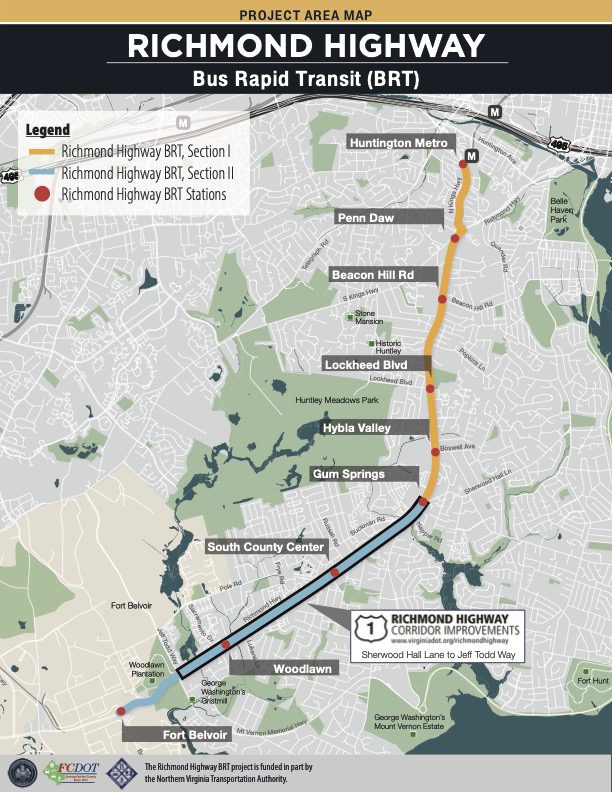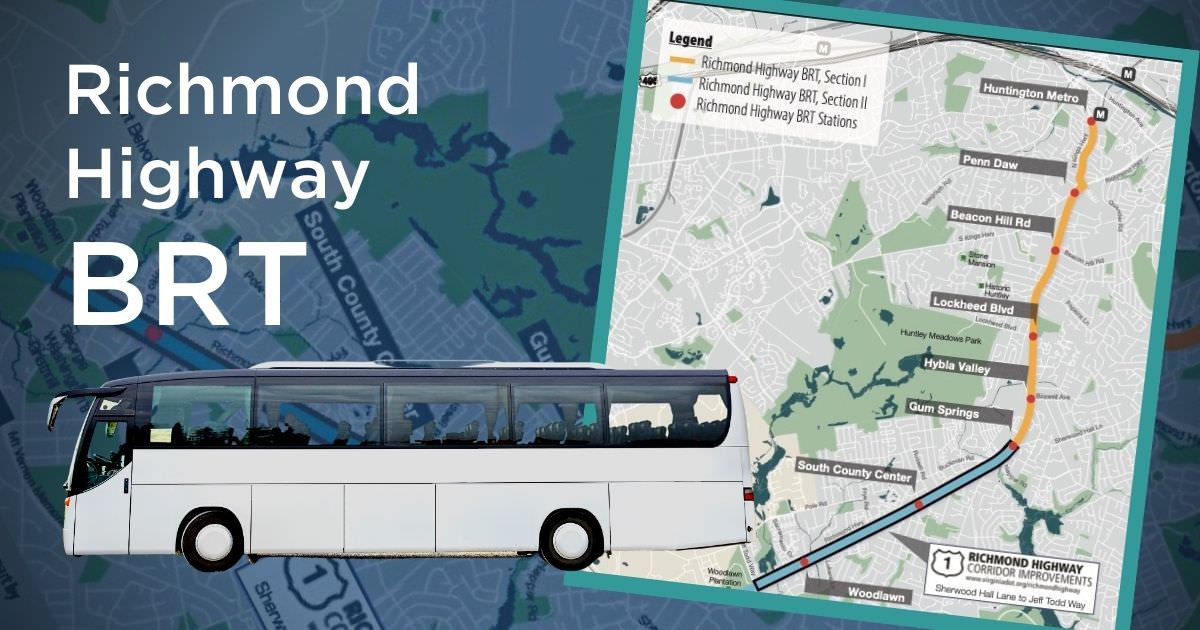Bus Rapid Transit (BRT) is a transit system offering bus service on dedicated lanes, allowing faster and more reliable service for commuters. In Northern Virginia, the Richmond Highway BRT system is planned to run from the Huntington metro station south to Fort Belvoir.
Transit projects normally come with a lot of promise. But what do actual commuters think about BRT? San Francisco’s new BRT system just got rolling in May 2022 and is receiving some great reviews from bus riders.
Bus rapid transit projects can be an important component of multimodal transportation planning. In multimodal development and redevelopment, many aspects come under review. In our work on the Key Bridge Marriott redevelopment in Rosslyn (Arlington, Virginia), for example, new traffic circulation, access, and drop-off/pick-up ideas were developed due to the increased access to vehicular, pedestrian, and active transportation networks such as the Custis Trail.
Down the Potomac River toward Alexandria and Fairfax County, the new Richmond Highway (Route 1) bus rapid transit should help spur rethinking of transportation, similar to that in Rosslyn.
Back in 2013 and 2014, the Virginia Department of Rail and Public Transportation (DRPT) conducted a Multimodal Alternatives Analysis for a segment of Route 1 running over 15 miles from Alexandria to Woodbridge. This study recommended the development of a bus rapid transit system along this route.
The benefits of BRT include:
- Bus schedules that enable reliable, frequent, efficient service.
- Dedicated lanes and traffic signal priority that enable free-flow travel for buses, reduce traffic-related delays and travel times, and improve reliability.
- IT systems that allow for real-time bus tracking for commuters and streamlined fare collection.
- Bus stations that improve the commuter experience, including all-door boarding and off-board fare collection to facilitate boarding.
Plans for the Richmond Highway BRT also include facilities for both pedestrians and bicyclists (continuous sidewalks and two-way cycle tracks on both sides of the road). By enabling additional, non-vehicular methods of commuting, the BRT plans envision an improvement in transit frequency, reduction in traffic delays and rush hour congestion, changes to land uses in the area, improved property entrances and sidewalks at intersecting streets, and overall improved safety for commuters of all types.
Preliminary development and design is expected to continue through 2023, with right of way activity running from 2021 through 2025. Construction is slated to begin in 2025 and end in 2030.


